Maps of DevOps: Introduction
Posted on October 25, 2019 in DevOps Updated: May 19, 2020
Welcome
This post marks the beginning of a multi-part series explaining the ideas of DevOps (that is, Development Operations). The target audience is primarily those unfamiliar with DevOps, and it is meant to be friendly even to those without a technical background who seek to understand the principles behind what has become something of a tech buzzword. Perhaps even those already initiated may find a nice insight or two.
Definitions
To begin, we should first define some terms. "Software development" is generally concerned with building applications which provide some business value - that is, which provide solutions to business problems. On the other hand, "information-technology (IT) operations" is generally concerned with keeping an organization running smoothly by maintaining the existing applications and the infrastructure on which they rely while ensuring that changes to those assets do not cause service disruptions. As you can see, these goals are not necessarily in alignment and could even be at odds.
Thus, Wikipedia defines DevOps as such:
DevOps is a set of practices that combines software development and information-technology operations which aims to shorten the systems development life cycle and provide continuous delivery with high software quality
In other words, DevOps is the attempt to have the best of both worlds: to delivery software quickly and often while maintaining a high level of system up time. Throughout this series, we will explore the ideas which underlie this goal, and in describing the underlying pattern, we hope to reveal a broader applicability of these principles such as always comes when one extracts a general principle from a particular case.
Motivation
People don't have ideas. Ideas have people. -Carl Jung
I first encountered the principles of DevOps in a book called Leading the Transformation1 some years ago and have since become rather passionate about the topic. Sadly over that same period, I have also seen its impenetrability to those not expressly interested in seeking it out and have been disheartened by the ease with which it is misunderstood.
Traditional introductions to DevOps typically begin with an analogy to the Lean manufacturing movement of the 1980's, and I have always found that somewhat unsatisfying. This approach has the benefit of rooting DevOps in a mature framework, but it runs the risk of explaining a new concept in terms of another, equally foreign one.
Owing to a background in mathematics, I have long been interested in the ways in which ideas or methods generalize. Thus the congruence between these disparate fields suggested to me an underlying idea common to both.
As I thought about these ideas, I noticed a similarity between the figures (see below) used to express The Three Ways of DevOps 2 and those used to describe the phenomenological landscape of human motivation in Maps of Meaning3 . Thus the title of this series, Maps of DevOps, is a play on that book's title. This leads directly to my approach which perhaps predictably is to show how the principles of DevOps can be derived from the ideas presented there.
Approach
There is more wisdom in your body than in your deepest philosophy -Friedrich Nietzsche, Thus Spoke Zarathustra
One of the main theses of Maps of Meaning is that there is a universal story-like structure through which we understand the world. Seen at a sufficiently abstract level, all belief systems fit within this framework, thus the subtitle The Architecture of Belief. My goal is to show that Gene Kim's Three Ways of DevOps (expressed succinctly in his post on The Three Ways and elaborated in detail in The DevOps Handbook4) can naturally be understood within the Maps of Meaning framework.
I believe this approach makes these principles more widely applicable as it emphasizes that DevOps is a culture - a pattern of behavior - and not a particular set of tools and buzzwords. Put another way, DevOps is an idea that inhabits an organization and the individuals within it.
I hope you will join me on this journey to reimagine the principles of DevOps.
Figures
The following are figures from Maps of Meaning juxtaposed with Gene Kim's diagrammatic representations of The Three Ways of DevOps. The Maps of Meaning figures have bizarre names owing to that book's very different subject matter, but we will cover that ground in due time.
The Domain and Constituent Elements of the Known vs The First Way
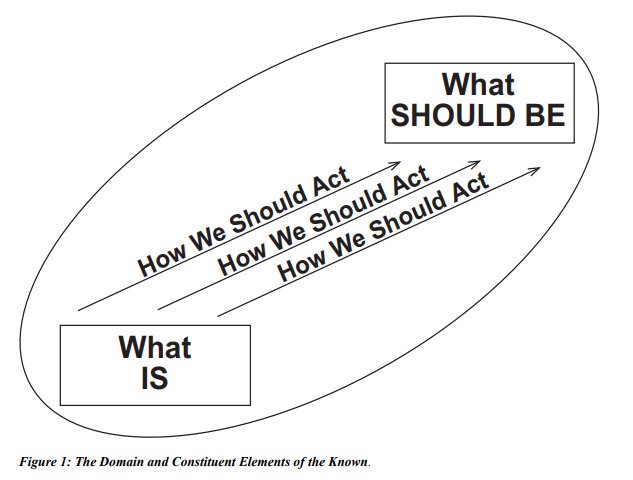
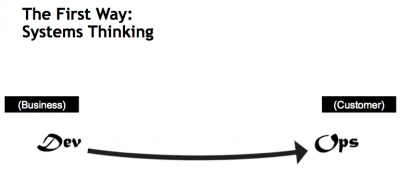
The Regeneration of Stability from the Domain of Chaos vs The Second Way
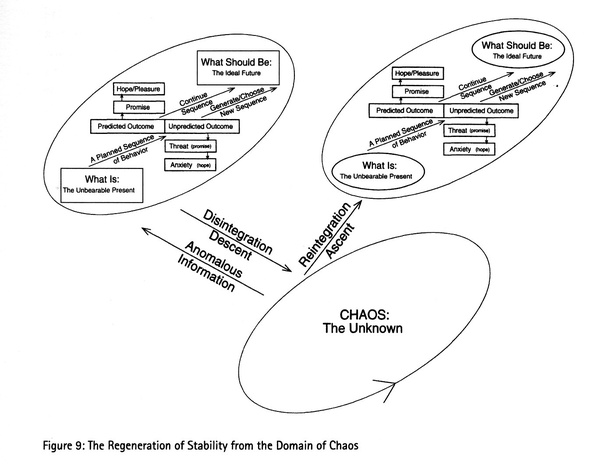
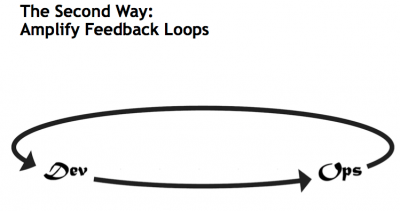
Bounded Revolution vs The Third Way
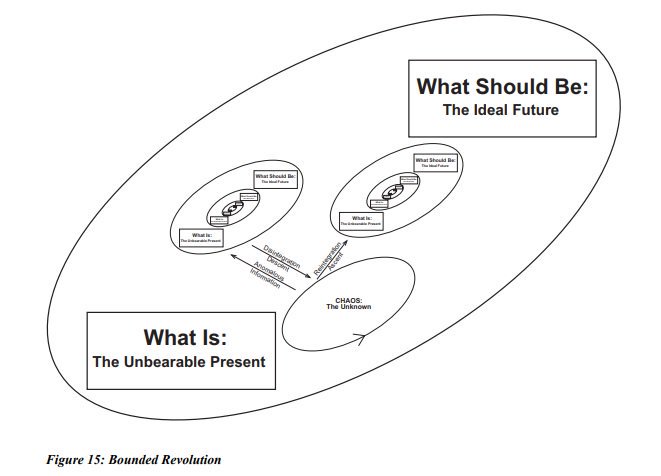
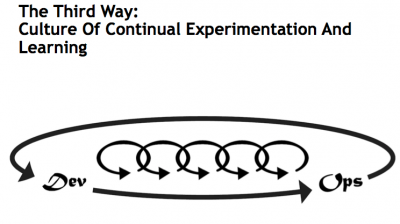
References
- Leading the Transformation: Applying Agile and DevOps Principles at Scale, Gary Gruver, Tommy Mouser, Gene Kim (2015), IT Revolution Press (BOOK) - https://www.amazon.com/Leading-Transformation-Applying-DevOps-Principles/dp/1942788010
- The Three Ways: The Principles Underpinning DevOps, Gene Kim (WEBSITE) - https://itrevolution.com/the-three-ways-principles-underpinning-devops/
- Maps of Meaning: The Architecture of Belief, Jordan B. Peterson (1999), Routledge (BOOK) - https://www.amazon.com/Maps-Meaning-Architecture-Jordan-Peterson/dp/0415922224
- The DevOps Handbook: How to Create World-Class Agility, Reliability, and Security in Technology Organizations; Gene Kim, Patrick Debois, John Willis, Jez Humble, John Allspaw (2016), IT Revolution Press (BOOK) - https://www.amazon.com/DevOps-Handbook-World-Class-Reliability-Organizations/dp/1942788002